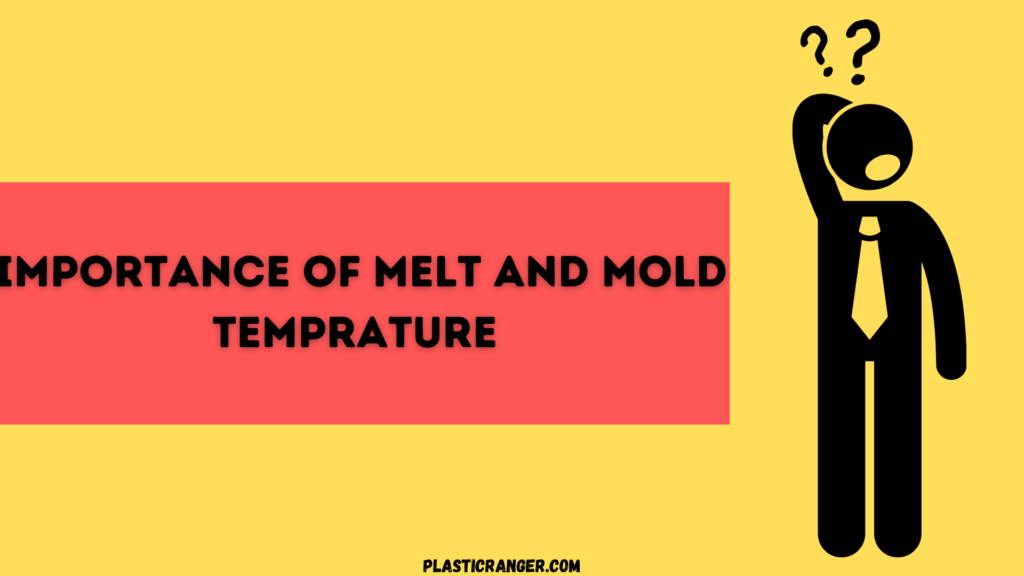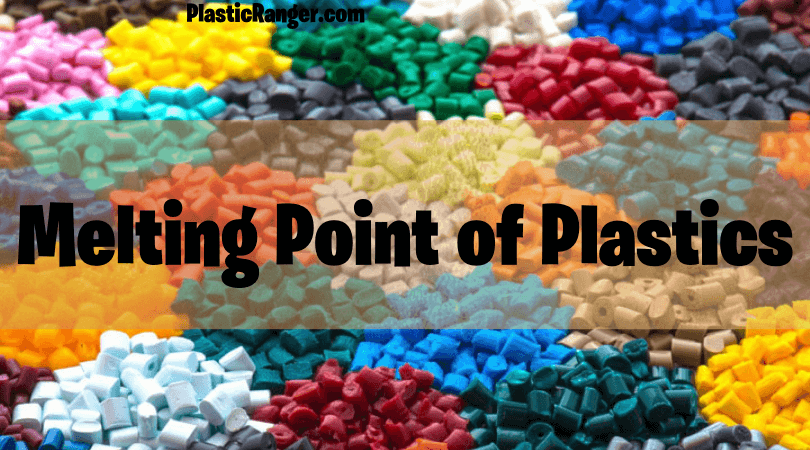Hello people; a plastic’s melting point is essential in determining its applicability. Let’s have a look at the plastic melting temperature values.
What is the Melting point of Plastics
The melting point of a plastic is fundamentally influenced by its chemical composition. Take ABS as an example, which melts at around 200°C (392°F). PVC begins to melt in the 160 to 210 degrees Celsius (320 to 410 degrees Fahrenheit). Understanding the melting point of plastic is crucial in defining its potential uses and how it can be processed.
Melting Point Definition – A specific temperature range in which a polymer reveals a transition from ordered to disordered resulting from heating is called the Melting point.
Discuss the melting point of all the mainstream plastics with a defined table. Here we go:
Plastic Melting Temperature Chart
| Materials | Melting Point Range (℃) |
| ABS – acrylonitrile-butadiene-styrene | 190-270 |
| ABS/PC Alloy | 245-265 |
| Acetal | 180-210 |
| Acrylic | 220-250 |
| CAB – Cellulose Acetate Butyrate | 170-240 |
| HDPE – High-Density Polyethylene | 210-270 |
| LDPE – Low-Density Polyethylene | 180-240 |
| Nylon 6 or Polyamide | 230-290 |
| Nylon 6 (30% GF) | 250-290 |
| Nylon 6/6 | 270-300 |
| Nylon 6/6 (33% GF) | 280-300 |
| Nylon 11 | 220-250 |
| Nylon 12 | 190-200 |
| PEEK – Polyether ether ketone | 350-390 |
| Polycarbonate | 280-320 |
| Polyester PBT | 240-275 |
| PET (Amorphous) | 260-280 |
| PET (semi-crystalline) | 260-280 |
| Polypropylene (Homopolymer) | 200-280 |
| Polypropylene (copolymer) | 200-280 |
| Polypropylene (30% tank filled) | 240-290 |
| Polypropylene (30% GF) | 250-290 |
| Polystyrene | 170-280 |
| Polystyrene (30% GF) | 250-290 |
| PVC – Polyvinyl chloride | 160-210 |
| SAN – Styrene acrylonitrile | 200-260 |
| SAN (30% GF) | 250-270 |
| TPE – Thermoplastic Elastomer | 260-320 |
Engaging Read – 7 Types of Plastics | An Helpful Illustrated Guide
Please wait for a second; that’s not it.
Bonus Content – Let’s also look at the mold temperatures of all the plastic materials. Here we go.
Mold temperature of Plastics
| Materials | Mold Temprature Range (℃) |
| ABS – acrylonitrile-butadiene-styrene | 40-80 |
| ABS/PC Alloy | 40-80 |
| Acetal | 50-120 |
| Acrylic | 50-180 |
| CAB – Cellulose Acetate Butyrate | 40-50 |
| HDPE – High-Density Polyethylene | 20-60 |
| LDPE – LowDensity Polyethylene | 20-60 |
| Nylon 6 or Polyamide | 40-90 |
| Nylon 6 (30% GF) | 50-90 |
| Nylon 6/6 | 40-90 |
| Nylon 6/6 (33% GF) | 40-90 |
| Nylon 11 | 40-110 |
| Nylon 12 | 40-110 |
| PEEK – Polyether ether ketone | 120-160 |
| Polycarbonate | 85-120 |
| Polyester PBT | 60-90 |
| PET (Amorphous) | 20-30 |
| PET (semi-crystalline) | 20-30 |
| Polypropylene (Homopolymer) | 30-80 |
| Polypropylene (copolymer) | 30-80 |
| Polypropylene (30% tank filled) | 30-50 |
| Polypropylene (30% GF) | 40-80 |
| Polystyrene | 30-60 |
| Polystyrene (30% GF) | 40-80 |
| PVC – Polyvinyl chloride | 20-60 |
| SAN – Styrene acrylonitrile | 50-85 |
| SAN (30% GF) | 50-70 |
| TPE – Thermoplastic Elastomer | 40-70 |
Notice – The information mentioned about plastic melting point and mold temperatures is legitimate but should be used as a reference. For optimal results with production, the best thing would be to consult with your material supplier.
How a Plastic’s Melting Point Affects Its Applications
In the vast and versatile world of plastics, the melting point of a particular polymer serves as one of the primary determinants of its potential applications.
Plastics, an essential part of modern life, are designed to serve myriad functions, from the packaging we open daily to the components of life-saving medical devices.
A fundamental understanding of its melting point lies at the heart of determining which plastic suits the job.
Different plastics have varied melting points, directly influencing where and how they are used.
Packaging Applications
Low melting point plastics, like Low-Density Polyethylene (LDPE) and Polypropylene (PP), are commonly used in the packaging industry.
Their lower melting points make them ideal for producing thin films and sheets easily molded and sealed.
Food packaging, for instance, demands plastics that can undergo heat sealing without deforming at low temperatures.
Automotive and Aerospace Industries
High-performance plastics with higher melting points are critical for applications where they’ll be subjected to high temperatures.
Polymers like Polyetheretherketone (PEEK) or Polysulfone (PSU) are renowned for their heat resistance and are frequently found in car engines and aircraft components for automotive and aerospace verticals.
Their ability to maintain structural integrity in extreme conditions sets them apart.
Electronics
The electronics industry demands plastics that can withstand both the heat generated by electronic components and the heat of the soldering process. Polytetrafluoroethylene (PTFE), with its high melting point, is often used as an insulator in cables and connectors.
Medical Equipment
Medical devices require plastics that can tolerate repeated sterilization, often involving high temperatures.
High melting point polymers ensure these devices remain stable and don’t degrade prematurely.
Consumer Goods
Think about the variety of plastics used in kitchen appliances. Utensils made of nylon with a reasonably high melting point won’t melt quickly when left in a hot pot.
Similarly, the plastic components of coffee makers, toasters, and microwaves are carefully chosen based on their melting points to ensure longevity and safety.
The Importance of Melt and Mold Temperature

Knowing the proper plastic melting and mold temperature is more important than we realize; however, most people don’t take it seriously and downgrade its importance as some random numbers on the screen.
It’s not that straightforward; in injection molding, these molding conditions significantly influence the final properties like appearance, strength, and aesthetics.
There needs to be a clear distinction between process conditions and setpoints exercised to have control over them.
Melt temperature is the real temperature of the material as it exits the nozzle and enters the mold.
The barrel setpoints showcase the tools we utilize to get the desired melt temperature, which means they differ.
The mechanical work done toward the material, the residence time, and screw and barrel condition also play an essential role in establishing the actual melt temperature.
Talking about mold temperature, people assume that this doesn’t impact final product integrity much, but they’re wrong. It’s less obvious but has an acute effect on final properties.
Amorphous materials like polycarbonate and ABS have higher model temperatures producing lower levels of molded in-stress and more significant impact strength, fatigue performance, and stress-crack resistance.
For semi-crystalline materials, mold temperature becomes crucial for understanding the degree of crystallinity in the polymer.
This, in turn, is important for many performance attributes, such as fatigue resistance, wear resistance, creep resistance, and dimensional stability at higher temperatures.
Suggested Read
- How is Plastic made? A Simple and Detailed Explanation.
- What is Compressive Strength of Plastics | The Complete Guide
- Top 5 Heat Resistant Plastic Materials | A List of High Temp Plastic Materials
- 7 Best UV Resistant Plastics For Outdoor Applications
- Dielectric Strength of Plastics | Electrical Properties of Plastics | The Definitive Guide
- The Density Of Plastics | The Complete Guide
The Conclusion
To summarize, the melting point of plastics plays a critical role in their processing and usage. The melting point varies depending on the plastic type and is influenced by chemical structure, molecular weight, and crystallinity factors. Having a good understanding of the melting behavior of plastics is crucial for effective manufacturing and recycling.
Additionally, the melting point can impact the performance and lifespan of plastic products in different conditions. Therefore, it is crucial to consider the melt temperature when choosing plastics for various applications.
Kindly share your reviews in the comment box.
Have a wonderful day.
Quick Navigation


I want to heat and apply pressure to waste plastics (polymers) of different melting points and manufacture building materials, such as foundation blocks, sidewalks, and retaining walls in lieu of concrete. Can all common waste plastics be utilized in this manner including bags?
Hey Mike, thanks for the question. I believe all common plastic waste products like bags, bottles, containers, hangers, disposable cups, etc are good for civil applications. Additionally, I think PET material is mostly used in all those products. So, PET material should be the best option for you.
Hello Sagar Habib,
I am trying to make a prototype product using what I presume is one of the four listed below. The bottle tops of washing up liquid is what I am using. I have tried glue but this does not provede stability. I was thinking of maybe heat welding the parts I have together. What temperature is best for softening my material and hopefully create a bonded joint.
Thanks in advance
Have a good day
Geoffrey Cadman
Polypropylene (Homopolymer) 30-80
Polypropylene (copolymer) 30-80
Polypropylene (30% tank filled) 30-50
Polypropylene (30% GF) 40-80
Good to see a guide on plastic melting point. Sharing all the information in one table is a very good idea.
Hi Sagar Habib,
Would you please give me some ideas about the mixing of calcium carbonate with polymer, how come they could be mixed at a same temperature even though they have different melting temperatures.
What about directly compressing a mix of plastics. Then under high Newton forces compressing the mix to minimal spaces, heat the steel mold so that just the outer plastic against walls melts.
90% volume compressed plastic/s is stabilized within a hard shell.
Test how hot and long for each brick.
Perhaps the energy for pressure of raw material may be less efficient than with a chopped mix with less energy to chop into granular first.
The design came to me as a method to use less energy vs melting for extrusion.
Rule out structurally weak.
Sounds interesting. polycarbonate might work with your method.
Thank you for some very useful information. I want to simply recycle some plastics into ‘boards’ to replace wood on park benches 2.5″x1.25″x 4ft max length. Max load 300 lbs. Is hdpe my best choice? Plan on shredding and extruding with a self made unit. What feed rate should i try for? Should i preheat the mold? Hold at temp after molding? How long? What melt temp should i be at at the breaker plate? Should the heat in the melt tube be linearly increased or logarithmicly? What size should the feed material be?
May i know, what is your reference book for this values?
Sir, I would wish to know whether compostable resins can replace HDPE / LDPE plastic for making *medical waste collection flexible bags*?
If yes, What should be the minimum thickness of bags for such application where hazardous/ infectious contents (25 Litres to 60 litres) are to be carried safely for disposal?
What is the melting point (in degrees) of Compostable resins?
Around 150-160 degrees Celsius (302-320 degrees Fahrenheit).